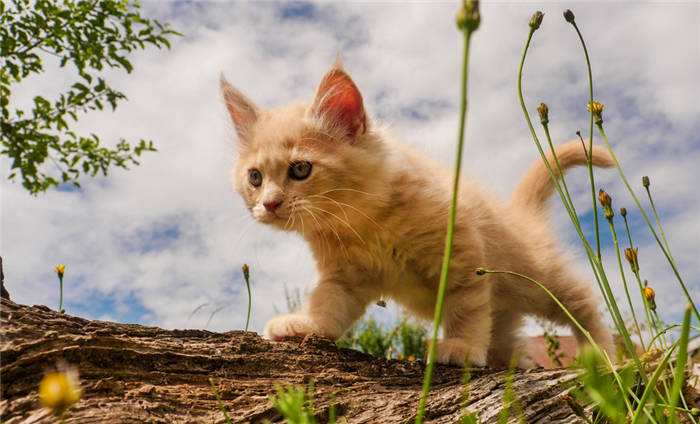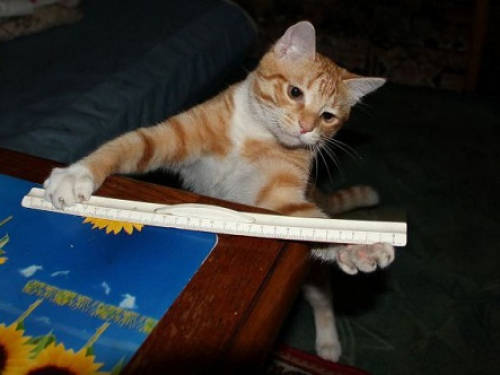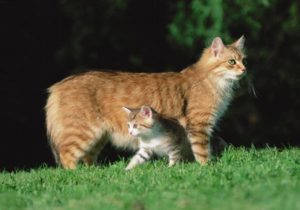When growing up, playfulness and mobility gradually fade. On average, furry pets settle down shortly after puberty and subsequent castration. Despite this, some animals retain their love of agile games and races even in old age. The most active breeds include the Abyssinian, Siamese, Oriental, Savannah, Bengal and all varieties of Sphynx.

- 🐱To what age do cats grow up
- Kitten growth and development
- Dependence of the growth of the cat on the breed
- Factors affecting kittens' growth
- Emotional maturing
- Stages of growing up of cats
- Choice of vitamins
- What does a cat's growth depend on
- Maturation of a cat by months
- Until what age do cats grow up?
- What affects the growth rate
- Stages of kittenhood
- Newborn
- The first month
- Second month
- Third-fourth months
- Adolescence
- When the kitten becomes an adult
- Approximate age
- Which animals mature faster
- Which animals mature later?
- Creating favorable conditions for kitty growth and development
- Nutrition
- Water regimen
- Activity
- Lack of stress
- Feedback from owners
- Table of averages of growing up
- Developmental lag
- Predevelopment
- How to choose in a litter a large or small individual
🐱To what age do cats grow up
Owners of kittens at least once wondered how their pet will grow up: fragile or fat, small in stature or a giant.
A cat grows up at the moment when the skeleton is finally formed. One should pay attention not to the weight but to the length of the body, legs, the space between the shoulder blades and the size of the head.
And cats of different breeds grow differently from each other. For example, small and medium sized cats: Manchin, Rex, Siamese, reach their best height at 14-15 months.
Large breeds: Maine Coons, Bengals, Ragdolls, Persians stop growing by 2-3 years of age.
The sex of the animal is also important. Whereas females stop growing by 10-11 months of age as they reach puberty, cats can continue to grow up to 2-3 years of age.
It is possible to predict what a cat's growth will be by judging by some factors:
- heredity: depends on the growth of the parents;
- Sex: cats are much shorter and lighter than cats;
- breed: the smaller the breed of cat, the less time it takes for their skeleton and muscle mass to grow;
- care: a stray cat is unlikely to outweigh a pet's weight and growth due to constant malnutrition;
- castration: after operations, cats put on weight;
- nutrition: the richer and more plentiful a cat's diet, the more
- The more plentiful the cat's diet, the greater the body's ability to achieve maximum growth;
- parasites: Worms and fleas cause growth and development problems in cats, they take up the lion's share of nutrients and stop the formation of the skeleton and muscles;
- diseases: chronically ill cats from an early age always lose length and weight to healthier ones;
- hormonal drugs: pills and drops that reduce the hunt in cats and cats, used at a young age, negatively affect their growth.
Be sure to be examined by a veterinarian for hidden diseases.
The most important thing in the development of a pet is its diet. Feeding a cat sausage and soup is unacceptable and unhealthy.
Kitten growth and development

Kittens of different breeds are born with different weights – from 60 grams to 200. It also depends on how many kittens were in the litter: the smaller, the larger the babies will be.
At each stage, the baby's nutrition is decisive. It is up to six months of age when the skeleton is formed and the main development of the kitten takes place, so take care that the diet is balanced and varied. Be sure to give your baby vitamins.
Important! Kitten's food up to six months lays the foundation of his development and growth, so be sure to take into account the advice of experts: it is dangerous to underfeed and overfeed kittens.
It will have a negative impact on the growth of the baby, and suffered a disease. Therefore, systematically show the kitten to the veterinarian.
Dependence of the growth of the cat on the breed

The size of the animal, and, accordingly, to how long it will grow, depends on the breed. Breed characteristics usually indicate how long cats will grow to. Regular (yard) cats are usually formed by one year of age.
If miniature cat breeds (e.g., Munchkin, Singaporean), they reach their maximum size somewhat earlier, by about 9 months to one year of age. These animals by nature cannot be large in size, so they can reach their maximum size quite quickly.
Important: According to breed standards, those individuals who are the smallest in size are especially prized among miniature kittens.
Animals of medium size (British, Scottish) have approximately the same growth rate. So, felinologists, explaining up to what age British cats grow, say that by 10 months to a year, these cats reach puberty, and their physical development may last up to two years. It is at this age that animals become especially beautiful. But up to what age Scottish straight-eared cats grow, is determined by the peculiarities of their breed. Usually they reach their maximum size by 2 – 2, 5 years. Kittens of this breed grow up a little bit faster, to 1,5-2 years old, despite the fact that they become sexually mature earlier. These criteria determine up to what age Scottish lop-eared cats grow.
But representatives of large breeds can increase in size sometimes up to the age of three years. May Coon, Chauzy, Bengal kittens are born quite large. Until one year these animals are in an active growth stage, after that they gain muscle mass and grow, but no longer at such a fast pace.
Factors affecting kittens' growth
– The cat's breed (the bigger the breed, the longer it takes to grow)
– Weight of the mother (the bigger and more solid she is, the faster her kittens will grow)
– nutrition (if kittens are malnourished, the growing up time may be delayed)
– vitamins (it's no secret that vitamin and micronutrient deficiencies negatively affect a cat's growth)
– Living conditions (stray cats are much smaller than domestic cats, because they live in terrible conditions, are constantly stressed and have poor immunity due to lack of vitamins)
– Stress (so, for example, moving has a negative effect on vigor, appetite and activity, and therefore on physical development)
– Parasites (they take away part of the nutrients and do not let the cat grow and develop in harmony)
Emotional maturing
In addition to physical growth, character also develops. However, it should be noted that the basis of the character of the cat is laid in the first months of life. This is why it is so important to engage in education from infancy.
Unlike physical growth, emotional maturation does not last a year and a half, but for life. This process can be compared to the maturation of children.
– At first, kittens are infantile and selfish. They do not care if you sleep or not. They want your attention and are willing to seek it by any means necessary.
– As "teenagers", cats try to build relationships with others and often rebel.
– Over time, cats become thoughtful in their actions, begin to respect their owner and perceive him not as a servant who fulfills all their whims, but as an equal and irreplaceable friend.
– In their old age, cats are very wise and reserved. However, this does not mean that they are no longer interested in learning about the world around them. They are still as curious and playful. They become very gentle, affectionate, affectionate and loyal to their owner as ever.
Stages of growing up of cats
- Neonatal. A period of up to 4 days in which kittens either gain or lose weight.
- Suckling Stage lasts until one month of age. At this point, the kitten is actively growing and developing.
- Transitional. Lasts from 1 to a month and a half. New foods are introduced into the diet. Growth at this time slows down.
- Adolescent. Kitten's active growth resumes and continues from 4 months of age until puberty (the cat's readiness to reproduce its own kind).
- At the age of one year, the animal is considered fully grown and independent.
- The cat must be kept in a clean, well-groomed room. The owner must clean the cat's litter box in time. The cat should be bathed and combed once a month. Bowls should be rinsed once every few days.
- Prevention of helminth infections should be carried out at least once every 3 months.
- If you have chronic diseases, you should visit your veterinarian for preventive check-ups.
- Comprehensive vaccinations against infections should be renewed every year. This reduces the risk of contracting viral and bacterial diseases. Even if the cat does not leave the apartment, infection can be brought in by the owner on the soles of her shoes.
- If the cat's food does not contain a vitamin-mineral complex, you should buy it separately from the veterinary pharmacy.
- You should not expose your cat to unnecessary stress. It is better not to give a reason for jealousy and resentment. Screaming and physical abuse as punishment is a direct pathway to upsetting the pet.
- If possible, do not expose the cat to early mating. There is a risk of stopping growth and development due to hormonal failure. In the same way, the immature body will throw all the energy to grow offspring in the womb, exhausting the cat.






